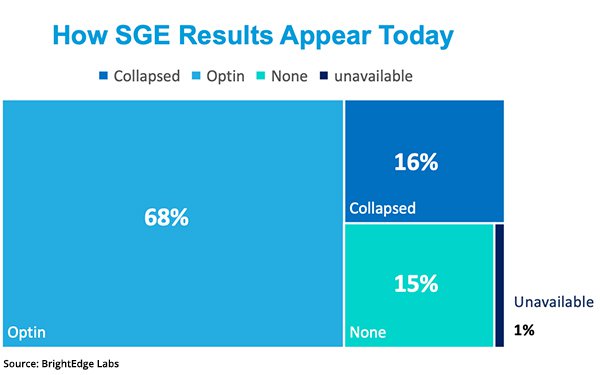Commentary
'Parser' To Track Google Search Generative On-Page Experiences
- by Laurie Sullivan , Staff Writer @lauriesullivan, December 19, 2023

BrightEdge engineers have developed a "generative parser" to support Google’s eventual rollout of its search generative experience (SGE) from Search Labs.
The parser interacts with artificial intelligence (AI) to understand GAI formats in search. It takes the results from the search query and parses each to identify things like rankings of a company or product. The parser inspects the search query to determine the visual layout of the page.
BrightEdge CEO Jim Yu said the parser has been tracking what Google tests daily in its SGE. “It will help marketers prepare,” he said. “It’s a new way to help marketers see how their brands will show up in generative AI search results.”
Yu expects to release the Parser when Google rolls out SGE from beta, which is expected to occur at the end of December.
advertisement
advertisement
Along with the BrightEdge parser, the company has developed a guide to SGE, cataloging all the examples that have been identified in Google’s tests. The guide will help marketers understand the experiences and mechanics behind each technology that Google will introduce through live insights.
SGE will provide multiple intent-based results to guide users in what they might be interested in next. Yu said this is a major change in the search experience.
Google, the tests identify, will use SGE to create much more immersive and different formats for shopping, healthcare and different types of experiences.
Rather than clicking through multiple searches, AI will aggregate all the possible searches to provide an integrated generative experience. It will do it industry by industry, Yu said.
“We see through the generative parser that the AI experiences is triggered 84% of search queries time,” Yu said. “It breaks down into three different states.”
The opt-in state is where users must explicitly request to see an AI search-generated result. In this request, the system generates the relevant AI-generated content. In BrightEdge’s analysis, the company saw that the opt-in states occur in 68% of the search queries as measured by search volume, making it the most common SGE state by far.
The "collapsed state" is when the AI-generated result is presented in a truncated form. Users must actively click the “Show More” button to view the content entirely. This state represents the second most frequent manner in which users encounter SGE results.
No SGE State identifies that not all search queries will trigger a search GAI
result.
BrightEdge found that approximately 15% did not trigger an AI-generated result. This means that AI-generated results do not universally apply to all search queries.
Understanding the types of queries that do not engage with AI-generated results can be just as informative as those that do, especially for SEO strategies.
BrightEdge also found that the collapsed state tends to be associated with keywords of lower search volume. This is a major indication that despite their frequency, collapsed state results do not command as much visibility in terms of overall search volume when compared to Opt-In results.
The company released additional data on how SGE will influence search based on Google's tests.



